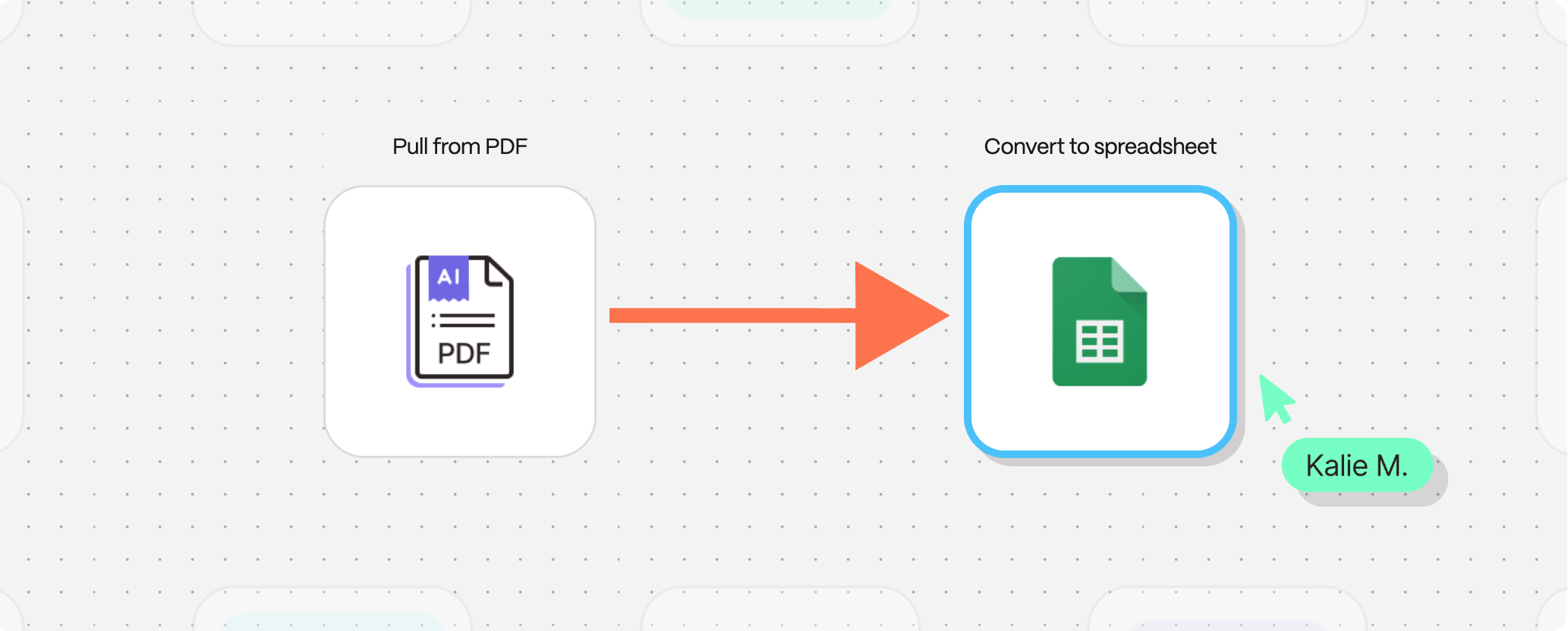Yes, it’s possible to parse a PDF file. Parsing means programmatically extracting specific data—like fields, tables, or key values—from a PDF so it can be used in other systems or workflows. Unlike basic conversion, parsing focuses on understanding the document’s structure and relationships between data points.
Parsing is especially useful when you need to extract repeating fields, like line items from invoices or shipment details from manifests.
How to Parse a PDF File
How to Parse a PDF File
- Identify target data such as table rows, invoice numbers, or SKUs.
- Choose a parsing tool that supports structured extraction.
- Define rules or patterns for how the parser should identify each element.
- Extract and validate results against source files.
- Export to Excel, CSV, or API for downstream processing.
Parsing makes PDFs actionable—turning static files into clean, structured data sources.
How It’s Done With Parabola
Parabola automates PDF parsing by combining extraction logic with data transformation workflows.
You can upload or receive PDFs via an integration, define which tables or fields to capture, and use Parabola steps to clean and structure the results.
Parsed data can be merged with other systems, filtered by field, and exported automatically to Excel or databases.
This removes manual steps and enables continuous, reliable data extraction from documents at any scale.
